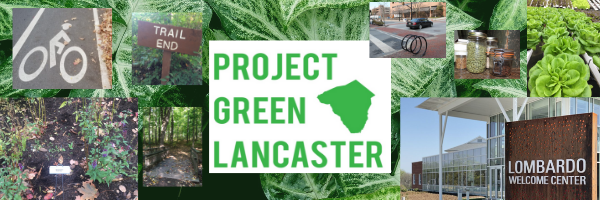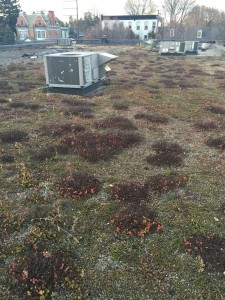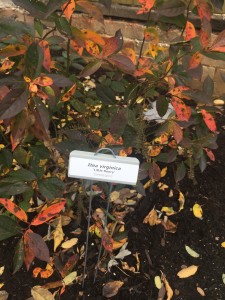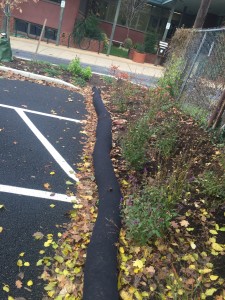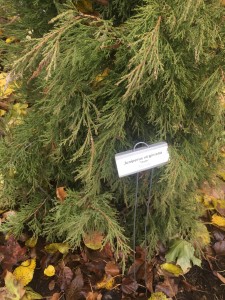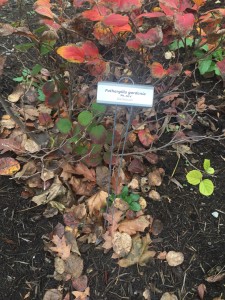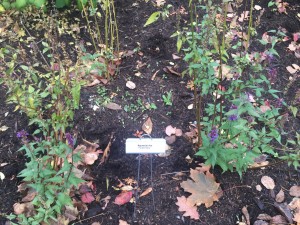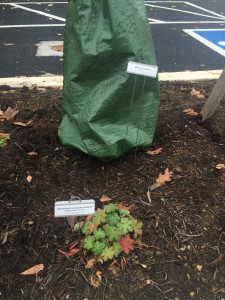Rain Gardens and Their Alternative Forms
The main focus of this initiative is rain gardens and the benefits that they possess to the communities as they are installed in throughout the Lancaster County area. Rain gardens, in another form, are known as recharge gardens, they are planted with different plants that all form together to complete their one function, filtrate stormwater runoff. These projects utilize detention and infiltration that use vegetation to achieve their aesthetic look. With their increasing popularity, rain gardens are looming in part because of their simplicity and many people can’t see their full potential and or are uneducated with their great benefits they bosses within the community. Rain gardens are easily made with existing developments and well-suited small sites such as homes or larger community areas and schools and they have even been executed in parking lots of churches and small businesses.
Photo Credit: Keegan Woyurka & Deanna Maurone
Locations
In the area of Lancaster City, one can find a wide variety of these gardens located throughout the city limits. Locations include, but are not limited to: 595 Lancaster Avenue, 168 Elm Avenue, and the intersection of Plum and Walnut Street. Our research also led us to a rain barrel located at Chestnut Hill Café, 532 West Chestnut Street.
Video Credit: Deanna Maurone
Different Forms and Increasing Popularity
There are other alternative forms in the global initiative that is rain gardens. One of these are rain barrels. When rain barrels are put to use, rainwater run-off is reused and engaged when replacing water in gardens and even replaced into larger bodies of water. In cities that utilize rain barrels, artists are found decorating these- making them more appealing and noticeable to the spectrum of the public, glamorizing the overall green efforts. Some of them can even be sold for profit to which those proceeds go to a larger sustainability incentives or to help pay for the current project at hand. The thing about having one green incentive already is that it motivates you to continue to be green and help educate others on going green. Such as why artists take the rain barrels so people can stop and stare at not only their work but the work and duty of the rain barrel collecting storm water run off for other use.
Rain gardens have grown in productivity as well as appeal. Rain gardens can function well in landscaping communities while providing a destination for run-off filtration. In regards to landscaping and materials needed, some runoff may require fertilizers or regular mulch- the water enriching the garden will, in the long run, mean less maintenance if treated correctly, which will also benefit the surrounding environment(s). These gardens can last year round since they are used with plants called perennials that can help the rain garden preform its function 365 days of the year.
Video Credit: Deanna Maurone
Case Study
In a case study conducted on the process of conducting rain gardens, the city of Maplewood, Minnesota created a program that informed its citizens and its homeowners to build their own rain gardens. Programs and events were held in the city so that no only can they educate the people of rain garden incentives but actually seeing one for themselves since most do not even know what they are. City officials found that planned street improvements would have required the construction of costly new storm sewers in older neighborhoods. The problem with this arose when the officials found that these sewers would eventually lead into Lake Phalen, a popular urban lake where water pollution is a highly regarded concern. After the city officials conducted intensive studies and community surveys, landscape solutions such as rain gardens were chosen to help mitigate the future storm water problems associated with the city’s growth., it was a complete success.
Rain Gardens in the parking lot of the Community Mennonite Church of Lancaster
Video Credit: Deanna Maurone
Pros of Rain Gardens
Some benefits of this initiative include that rain gardens filters run off pollution, which in cities there are pollution all the time with cars and factories so having these being able to infiltrate without actually doing the work the plants do all the work is amazing for people on the go and busy. Another positive gain to rain gardens is that they can create a habitat for other insects such as butterflies and bees to establish homes in the plants and even help balance the pollen levels over a certain area. Another positive gain is that they are easy to manage and are somewhat inexpensive. The fact that they can conserve water while enhancing sidewalk appeal is a great pro. Last but not least they can protect rivers and streams.
Rain barrel located at Chestnut Hill Cafe, in Lancaster. This is another form of bio-retention, which is what water gardens also do. Video Credit: Deanna Maurone
Cons of Rain Gardens
While this initiative has numerous benefits to the community and their own place in nature, rain gardens also come with some issues. They may be inexpensive under certain circumstances, however rain gardens also have the potential to be very expensive projects. Additionally, rain gardens and the plants in them only last during certain months of the year. While water can still be filtrated to benefit the soil, the plants being absent may hinder the overall experience of rain gardens. Rain gardens are also new, so not much has been studied on their growth and long-term benefits to nature and local communities. Erosion can also be a factor to them if they are not properly taken care of.
Glossary:
- Water Garden: they are intended to be landscaped areas to treat stormwater runoff.
- Bio-Retention: Another word for stormwater management
- Rain Barrels: is a small, aboveground storage tank that collects rainwater from rooftop gutter downspouts, and stores it for use in the garden.
- Sustainability: the ability to continue a defined behavior indefinitely
- Erosion: Gradual destruction
- Conservation: prevention of excessive or wasteful use of a resource
- Infiltration: is the process by which water on the ground surface enters the soil.
Photo Credits: Keegan Woyurka
